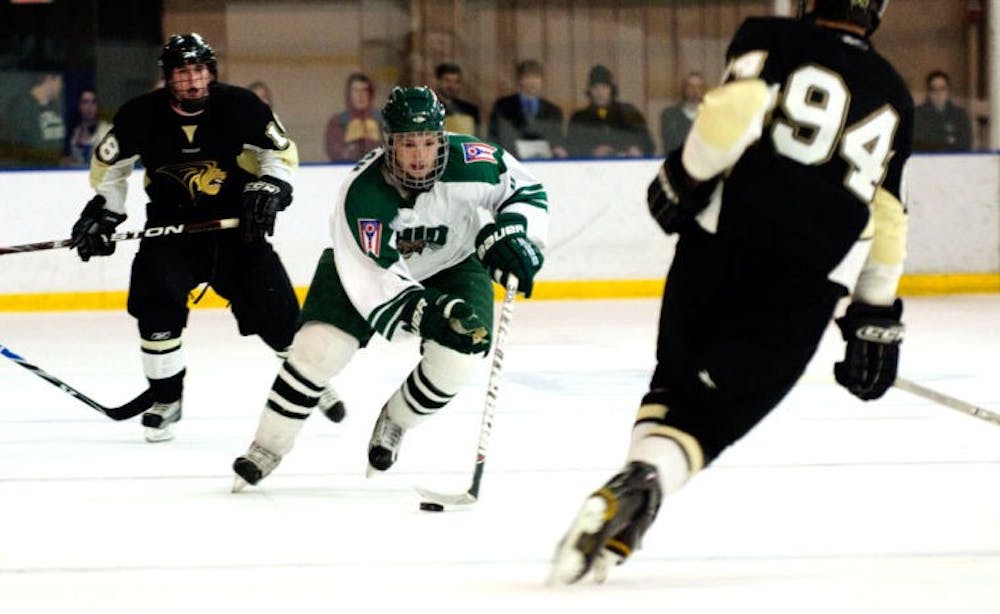When the NHL resumed play after the lockout that wiped out the 2004-2005 season, hockey was a different game. Gone were ties, two-line passes and of course neutral-zone traps — the staple of Stanley Cup winners such as the New Jersey Devils and the Dallas Stars.
The league wanted to showcase skill, not inhibit it. To excel in the ‘new’ NHL, defensemen needed to be able to contribute with and without the puck, and the reverberations of that change have been felt at every level of competition.
Just take a look at the Ohio blue line.
“I think that view has definitely had an impact on the game overall lately,” Ohio defenseman Steve Osacky said. “There’s a lot more puck-moving defensemen now. It’s not just a big guy that’s there to beat everybody up. You need to have speed. You need to have the skill to move the puck and be a threat on offense, too.”
Osacky is just one of four Bobcat blueliners who boast an abundance of offensive skills to complement solid defensive play. Along with Osacky, Zack Barbis, Jonathan Gulch and Jake Holzmer have combined to create one of the most dynamic and dangerous defensive corps in the nation.
“We’ve got players on the team that are more defensive defensemen that like to stay home and move the body around in front of the net,” Gulch said. “I think me bringing the offense to the table — and a couple other kids — it kind of balances it out. It works really well.”
“If you have everybody that stays back on defense, the other team’s going to know, ‘Hey they’re not coming out. We’ve just got to play against three forwards.’ It makes it a lot easier to defend against.”
Ohio coach Dan Morris had success with the pre-lockout approach to building a successful defense. In 2004, his Bobcats won the American Collegiate Hockey Association National Championship with a cluster of no-nonsense, stay-at-home defensemen.
But Morris said he recognized the direction the NHL was heading and realized he would have to make adjustments in order for his team to remain competitive in the ACHA.
“I think it trickles down – all the way down. There’s a lot of teams that don’t play that way and I think we’re at an advantage because we do play that way,” he said.
Morris said he required little more than sound, simple plays from the defensemen on the 2004 team. If a puck found their stick, they just sent it high and hard off the boards.
Now, things are a quite bit different.
“You could count the number of times we shot the puck out off the glass this year,” Morris said. “It’s a possession game. You’ve got to have the skill set.”
There is no question that the Bobcats’ ‘D’ has a lot of that skill set. It became commonplace this season to see the likes of Barbis and Gulch pick up the puck in their own end and lead the rush into the offensive zone, expertly navigating through the neutral zone and blowing past flat-footed foes.
The quartet combined for 32 goals and 101 points during the regular season that saw Ohio finish second in the Central States Collegiate Hockey League. Barbis led the unit with 31 points — the third straight year he has finished first in scoring among Ohio blueliners.
But sometimes recruiting defensemen for their offensive abilities can have its pitfalls. The overzealous players often risk turnovers and put themselves out of position, ignoring their primary responsibility of preventing goals, not creating them.
Morris said he has no plans in changing his philosophy with defensemen, especially after last weekend, when the Bobcats captured their second CSCHL Playoff Championship in three years.
“Defensemen, on our team, you’ve got to be able to handle the puck,” Morris said. “That’s what we require.”
bl245106@ohiou.edu
@ThePostSports






